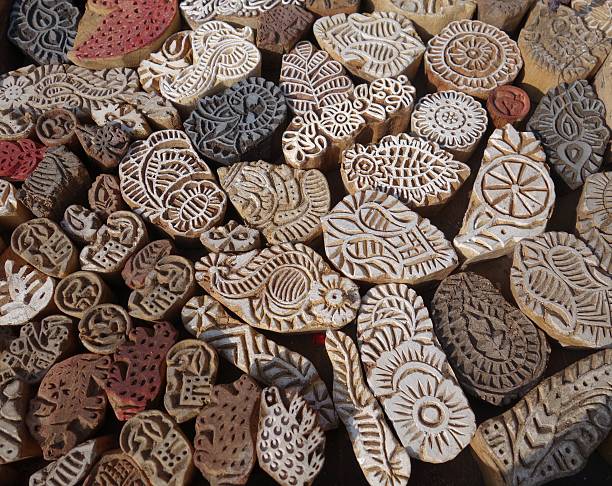
Block Printing : A Timeless Craft Rooted in History and Tradition
Share
Block printing is one of the oldest and most intricate textile printing techniques, known for its rich patterns, deep cultural significance, and artisanal craftsmanship. This method, which involves stamping fabric with hand-carved wooden blocks, has been practiced for centuries and continues to thrive in modern fashion and home décor. In this blog, we explore the origins of block printing, its evolution, and why it remains a beloved craft today.
The Origins of Block Printing
Block printing dates back thousands of years and has its roots in various ancient civilizations.
China: The Birthplace of Block Printing
The earliest known evidence of block printing comes from China around 220 AD during the Han Dynasty. Initially used for printing texts and Buddhist scriptures, the technique later evolved to decorate textiles. Chinese artisans perfected the art of carving intricate designs into wooden blocks, inking them, and pressing them onto silk and paper.


India: The Hub of Textile Block Printing
India adopted and refined block printing techniques, making it a key part of its textile heritage. The art of block printing in India can be traced back to the 12th century, particularly in Rajasthan and Gujarat. Indian artisans developed signature styles such as Bagru, Sanganeri, Ajrakh, and Dabu, each featuring unique motifs, color palettes, and resist-dyeing techniques. Indian block-printed textiles gained worldwide fame through trade routes, reaching Persia, Egypt, and Europe.
Persia and the Middle East
Persian craftsmen further enriched block printing by introducing intricate floral and geometric patterns influenced by Islamic art. The Persian technique of Kalamkari (hand-painted or block-printed fabric) became widely popular, especially in South India, where artisans adopted and merged Persian and Indian styles.
Europe: The Evolution of Block Printing
Block printing reached Europe during the medieval period, largely through trade with India. By the 17th and 18th centuries, European manufacturers, especially in France and England, started producing block-printed fabrics inspired by Indian chintz. The demand for these textiles led to industrial advancements in printing, eventually giving rise to roller printing and mechanized methods.
The Process of Block Printing
Despite advancements in textile printing, traditional block printing remains an elaborate and labor-intensive craft. The process includes:
1. Designing and Carving Blocks – Artisans carve intricate patterns onto wooden blocks, often made from teak or sheesham wood. Each color in a design requires a separate block.
2. Preparing the Fabric – Cotton or silk fabric is washed, dried, and treated with a mordant to ensure color absorption.
3. Dyeing and Printing – Natural or synthetic dyes are applied to the block, which is then pressed onto the fabric with precision. Artisans repeat this process to create complex, layered patterns.
4. Drying and Washing – The printed fabric is left to dry and then washed to remove excess dye, setting the colors permanently.



Why Block Printing Still Thrives Today
In an era of fast fashion and digital printing, block printing continues to hold value due to:
Sustainability – Handcrafted with natural dyes and organic fabrics, block-printed textiles are eco-friendly.
Artisanal Heritage – Each piece is unique, carrying the legacy of skilled artisans and centuries-old traditions.
Global Appeal – From designer clothing to home furnishings, block-printed fabrics are sought after worldwide for their elegance and craftsmanship.
